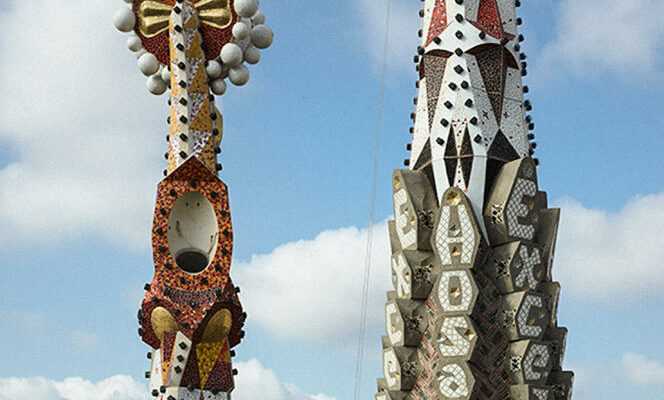These are the towers of the Sagrada Familia, this church-world, a mixture of Catalan modernism, Spanish Gothic and Art Nouveau, an emblematic monument of Barcelona. When he launched his construction project in 1883, Antoni Gaudi did not know that his life would not be enough to complete it. The site, which the architect directed for forty-three years, until his death in 1926, has continued to the present day. It still has to see five towers erected, which will be added to the thirteen that already exist. Ambitious, Gaudi’s initial project provided for the construction of a building with five naves, a crossing, an apse, an exterior ambulatory, three facades and eighteen towers.
If the Sagrada Familia was never intended as a cathedral, it was in terms of scale. Less wide than most other cathedrals in Europe, it presents a complex harmony of parts: numerous bell towers, three portals, an ambulatory with seven apse chapels, double naves and towers. Composed of structures that are all different both in terms of their architecture and their ornamentation, the Sagrada Familia is a spurt of oblong shapes, parabolic domes, chiseled spires, adorned with a host of raging creatures that replay the great tales of theology. Christian.
Unlike most other churches in the world, it has no exact right angles, inside or out, and very few straight lines in its design. Some wanted to see Gaudi as a pioneer of ecology, given the care he took to recycle lost material to give it a second life: ceramics, crockery and broken toys, or burnt bricks from industrial ovens. , as reported in a recent article by M, the World Magazine.
The Sagrada Familia is the leitmotif of Gaudi’s monographic exhibition which recently opened at the Musée d’Orsay in Paris. She stages the singularity of her practice, while inscribing it in the social game of her time.
